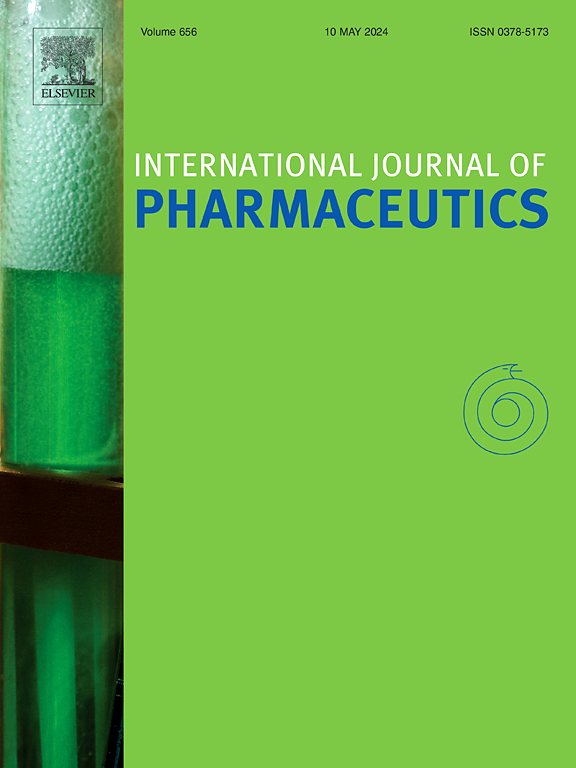在早产新生儿模型中,微气泡气溶胶提高了鼻后气溶胶渗透效率。
IF 5.3
2区 医学
Q1 PHARMACOLOGY & PHARMACY
引用次数: 0
摘要
雾化肺表面活性物质疗法是新生儿科长期追求的目标。然而,许多临床试验尚未显示出雾化表面活性物质的明确临床疗效,部分原因是向早产新生儿肺部输送气溶胶的技术挑战。该研究旨在测试微气泡对早产新生儿肺部沉积的改善作用。研究人员开发了一种体外测试方法来复制临床环境;该方法使用了一个三维打印的早产新生儿模型,该模型与一个高流量鼻插管(HFNC)和一个振动网状雾化器相连。HFNC 的流速与临床使用的流速一致(即 4、6 和 8 升/分钟)。随后,比较了有微气泡和无微气泡气溶胶的肺穿透率。含有微气泡的气溶胶的气动直径(MMAD=1.75 μm)低于不含微气泡的气溶胶(MMAD=2.25 μm)。含有微气泡的气溶胶中低于 1.0 微米的微气泡数量明显较多。在早产儿模型中,微气泡气溶胶的肺穿透率明显更高;在 4、6 和 8 升/分钟时,肺穿透率分别为 30.0%、25.5% 和 17.5%,而在这三种流速下,传统雾化气溶胶的肺穿透率均低于 1.25%。本文章由计算机程序翻译,如有差异,请以英文原文为准。
Microbubble-laden aerosols improve post-nasal aerosol penetration efficiency in a preterm neonate model
Nebulized lung surfactant therapy has been a neonatology long-pursued goal. Nevertheless, many clinical trials have yet to show a clear clinical efficacy of nebulized surfactant, which, in part, is due to the technical challenges of delivering aerosols to the lungs of preterm neonates. The study aimed to test microbubbles for improving lung deposition in preterm neonates. An in vitro testing method was developed to replicate the clinical environment; it used a 3D-printed preterm neonate model, connected to a high-flow nasal cannula (HFNC) and a vibrating mesh nebulizer. The flow rate of the HFNC mirrored that used in the clinics (i.e., 4, 6, and 8 L/min). Followingly, the lung penetrations of aerosols with and without microbubbles were compared. The aerodynamic diameter of aerosols with microbubbles (MMAD=1.75 μm) was lower than that of the counterpart (MMAD=2.25 μm). Microbubble-laden aerosols had a significantly higher number of microbubbles that were below 1.0 μm. Microbubble-laden aerosols had dramatically higher lung penetration in the preterm model; lung penetration efficiencies were 30.0, 25.5, and 17.5 % at 4, 6, and 8 L/min, respectively, whereas the lung penetration efficiency for conventionally nebulized aerosols was below 1.25 % in the three flow rates.
求助全文
通过发布文献求助,成功后即可免费获取论文全文。
去求助
来源期刊
CiteScore
10.70
自引率
8.60%
发文量
951
审稿时长
72 days
期刊介绍:
The International Journal of Pharmaceutics is the third most cited journal in the "Pharmacy & Pharmacology" category out of 366 journals, being the true home for pharmaceutical scientists concerned with the physical, chemical and biological properties of devices and delivery systems for drugs, vaccines and biologicals, including their design, manufacture and evaluation. This includes evaluation of the properties of drugs, excipients such as surfactants and polymers and novel materials. The journal has special sections on pharmaceutical nanotechnology and personalized medicines, and publishes research papers, reviews, commentaries and letters to the editor as well as special issues.

 求助内容:
求助内容: 应助结果提醒方式:
应助结果提醒方式:


